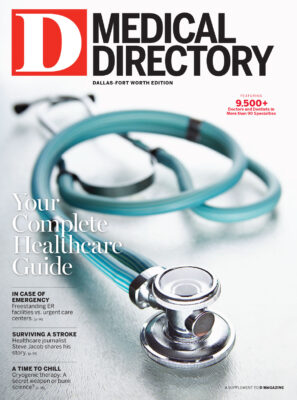
URGENT VS. EMERGENCY CARE
Although patients such as Lautzenheiser and Costa benefited from speedy, life-saving care from the freestanding EDs, not everyone needs emergency care for what ails them. Consumers who can’t distinguish between urgent care and emergency care might be paying too much, a problem that critics say could make healthcare more expensive.
Urgent care typically costs $105 to $135 for treatment of minor infections, flu symptoms, allergies, rashes, sprains, and fractures. Freestanding EDs charge $350 to $500 for visits involving more complex care for things like lacerations, high fever, and asthma attacks, according to the Urgent Care Association of America. Co-pays range from $35 to $50 for urgent care visits versus $75 to $100 for freestanding ED care.
Some EDs also charge facility fees. They vary in amount, depending on services provided, but can run as high as $1,500.
Insurance companies such as Aetna have taken issue with these charges, with some filing lawsuits. Much of the debate centers on whether freestanding EDs should charge the same facility fees as traditional emergency departments, because they don’t offer the full slate of services such as surgery, neonatal intensive care, and trauma care.
Accessibility is a big plus for geriatric patients and for parents of pediatric patients who don’t want to navigate a hospital campus.
First Choice accepts all commercial insurance, but because the Centers for Medicare and Medicaid Services don’t recognize non-hospital affiliated facilities, it can’t accept government insurance (like Medicare and Medicaid). Texas law, however, requires that all fully funded insurance plans pay all emergency claims at in-network benefits rates.
First Choice contends that it evaluates and stabilizes all patients who arrive at its facilities, regardless of their insurance status or ability to pay, in compliance with state law. The cost to be treated at First Choice is dependent on the services provided and procedures performed, said Heather Weimer, senior vice president of operational services.
“Just like a hospital emergency department, we charge a facility fee to enable our emergency room to be ready for any and all emergencies 24 hours a day, 365 days a year,” she says. “The facility fee covers everything from utilities, rent, and nurse and radiologist salaries, to the necessary medications, supplies, and equipment we must have on hand to be ready for all potential patients’ emergent needs.”
Without the facility fee, Weimer says, First Choice could not provide the communities it serves with access to an environment that provides first-rate emergency medical treatment
First Choice patient Pam Costa said she is OK with an extra fee because it justifies the convenience of saving time and receiving top-notch care.
“We know going in, it’s an ER, it says it on the sign, and the co-pay is an emergency room fee, not an office visit,” she says. “I didn’t notice [higher fees]. I look at it like you get what you pay for. If I can go down the street but pay a little more, I don’t care.”
•••

PRICE OF PREMIUM CARE
Patients treated in freestanding facilities are less likely to require complex care, with only 3 percent to 5 percent requiring hospital admission vs. 15 percent to 20 percent at a hospital emergency department, according to a 2011 Urgent Care Association of America report.
When patients at a freestanding ED require more complex care, they are transported by ambulance either to an affiliated hospital, the patient’s preferred hospital, or to another facility coordinated through a patient transport agreement.
Critics like Vivian Ho, a health economist at Rice University in Houston, argue that patient convenience is nice, but it will eventually drive up healthcare costs. The ideal scenario is for freestanding EDs to charge according to the type of treatment provided, so urgent care cases would cost less than emergencies. But we’re not there yet, she says.
Baylor’s Wood contends that the actual cost of healthcare is declining because these facilities are providing more access to care for those who might avoid seeking treatment because they can’t afford to miss three hours of work to wait in a traditional waiting room.
“If you can nip it in the bud upfront, before the disease progresses, you can keep costs down,” he says. “More access points are better for the system and they drive costs down.”
At First Choice, Hutchinson says one of the company’s biggest initiatives is educating consumers about the difference between freestanding EDs and urgent care, and when and where it’s appropriate to seek treatment. First Choice often mails out vouchers for families to tour the centers before an emergency occurs.
“They’re not used to an emergency room being right next to a Starbucks,” she says. “We want them to understand what they’re walking into.”
Emergencies are rarely convenient, but patient Costa says she’s glad to have First Choice in her neighborhood. Years after her heart attack, she met Dr. Muzzarelli’s wife, who came in for a massage.
“I told her her last name sounded familiar, and that a doctor by that name saved my life,” she says, adding that the doctor also came to visit her in the hospital on his day off. “His wife said, ‘You’re that lady! He came home that night and was a tad grumpy. When I asked if he was OK, he said, ‘A lady tried to die on me today, and I wasn’t going to let that happen.’”






